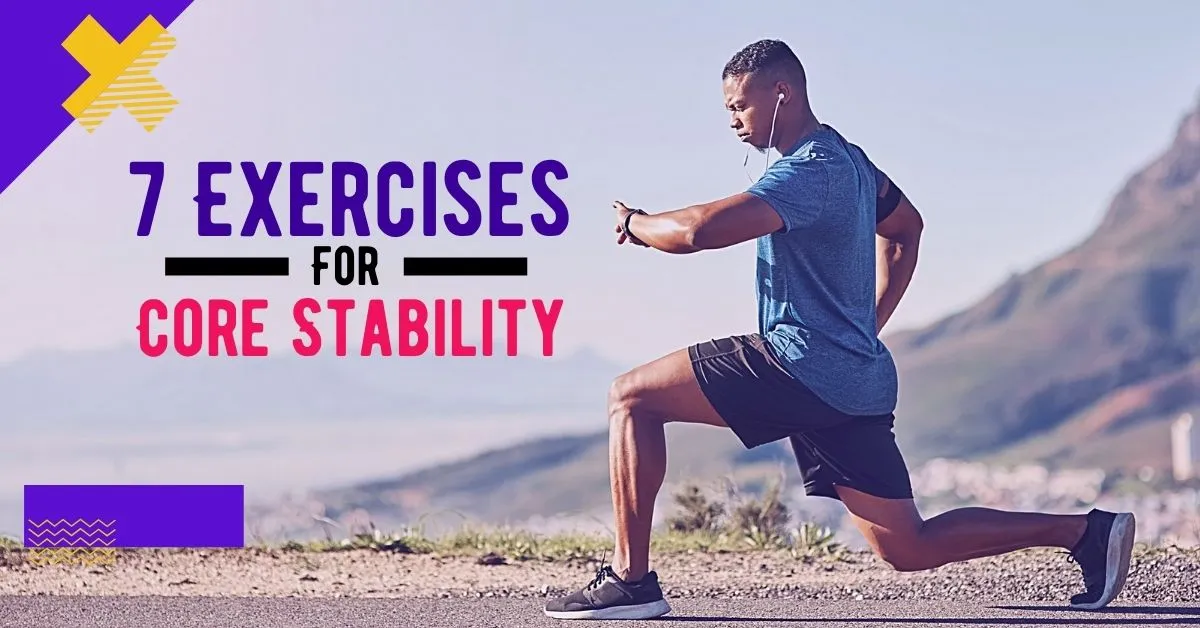7 Exercises for Core Stability. Developing core strength is essential for preserving overall health and well-being since it strengthens the backbone, reduces back pain, enhances movement patterns, and improves posture, balance, and stability.
There are numerous ways to build core strength, and there are numerous tools available to support that growth. But there are a lot of exercises that just require your body weight or some simple equipment. When exercising the core, the most crucial thing to keep in mind is to complete each exercise mindfully, without employing momentum, to ensure that the core muscles are activated.
You can incorporate the seven core stability exercises listed below into your existing fitness regimen. If you find some of these tasks too challenging, try the other version.
BOSU Canine
Priority: Structural integrity
How to carry out: With both hands on the floor beneath the shoulders, place your left knee in the middle of the dome. Maintaining your foot flexed, extend your right leg to hip height behind you. Raise your left arm to shoulder height and point your thumb up. After 20 seconds of holding, swap sides.
An alternative is to carry out the workout on the ground.
Heel Tap Supine
Priority: Structural integrity
How to do it: Lay down on your back with your arms at your sides. Pull the navel toward your spine by contracting your abdominal muscles. Toe up to ninety degrees. Gently bring your right heel down to the floor and then raise it back up to a 90-degree angle. Repeat the motion with your left leg, tapping the right and then the left heel on the ground in succession. Do ten reps on each leg. Four seconds should be allotted to each repeat, two for lowering the leg and two for raising it back up to a 90-degree angle
Marching Glute Bridge
marching-hip-bridge
Emphasis: Pelvic stability in limbs
How to carry out: With your hands by your sides, lie on your back. Raise your hips and maintain a gluteal bridge. Take the right foot off the ground so that the hip and knee are 90 degrees apart. After lowering the left foot to the floor, it should be elevated to a 90-degree angle and lowered to the middle. Repeat 20 reps of each leg lift while keeping your hips up and your pelvis in a neutral position.
An alternative is to hold a static glute bridge for at least 30 seconds while maintaining both feet on the ground.
Dead Bug Stability Ball
Priority: Structural integrity
How to carry out: Lift your knees to a 90-degree angle while lying on your back. Position a stability ball at your knees and firmly press your hands and legs onto it. Bring the navel closer to the spine by using your core muscles. Maintaining the ball on your left and right legs pointed in the same way, extend your left arm and right leg. The longer the longer the workout, the more erect the limbs are. Make sure your knees stay at a 90-degree angle when you return to the center; this will simplify the workout.
Repeat 10 times on each side, switching up which arm and leg are stretched during each rep.
Optional version: Complete the exercise without using a stability ball, lowering yourself while maintaining a 90-degree angle at the knees. It’s comparable to the previously mentioned Supine Heel Taps exercise, except it includes the arms.
Plank on Forearm with Toe Taps
Emphasis: Hip strength and core stability
How to carry out: Arms should be resting on the dome side of a BOSU balance trainer as you assume a forearm plank. Start tapping your right toe alternately in lateral directions, pushing it away from your body, touching the floor, and then coming back to your center. Proceed with the left leg. Finish ten repetitions on each leg in a set.
An alternative exercise is to perform a static forearm plank while keeping your forearms on the floor and your feet hip-distance apart.
Side Plank Rotating Torso
Emphasis: Shoulder stability and core strength
How to do it: Extend both legs and position the body in a forearm-side plank. Draw the hand below the ribs by rotating your rib cage after lifting your upper arm over your chest. After ten to twelve repetitions, switch to the opposite side of the body.
An alternative variant of the exercise involves lying on the floor with your bottom shin on a modified side plank.
One-leg Deadlift
Focus: Strength of the posterior chain
How to carry out: With your feet hip-distance apart, stand tall and grasp a set of dumbbells. Raise the right foot off the ground, then smoothly pass the pelvis over the upper part of the left leg. The foot and the head should be in balance with one another. The body’s parallel alignment with the floor should be the lowest point of hinge. Maintain a neutral pelvis posture. Finish 12 reps with each leg.
Optional workout: Either carry out the deadlift with both feet on the ground or perform the exercise without dumbbells.
